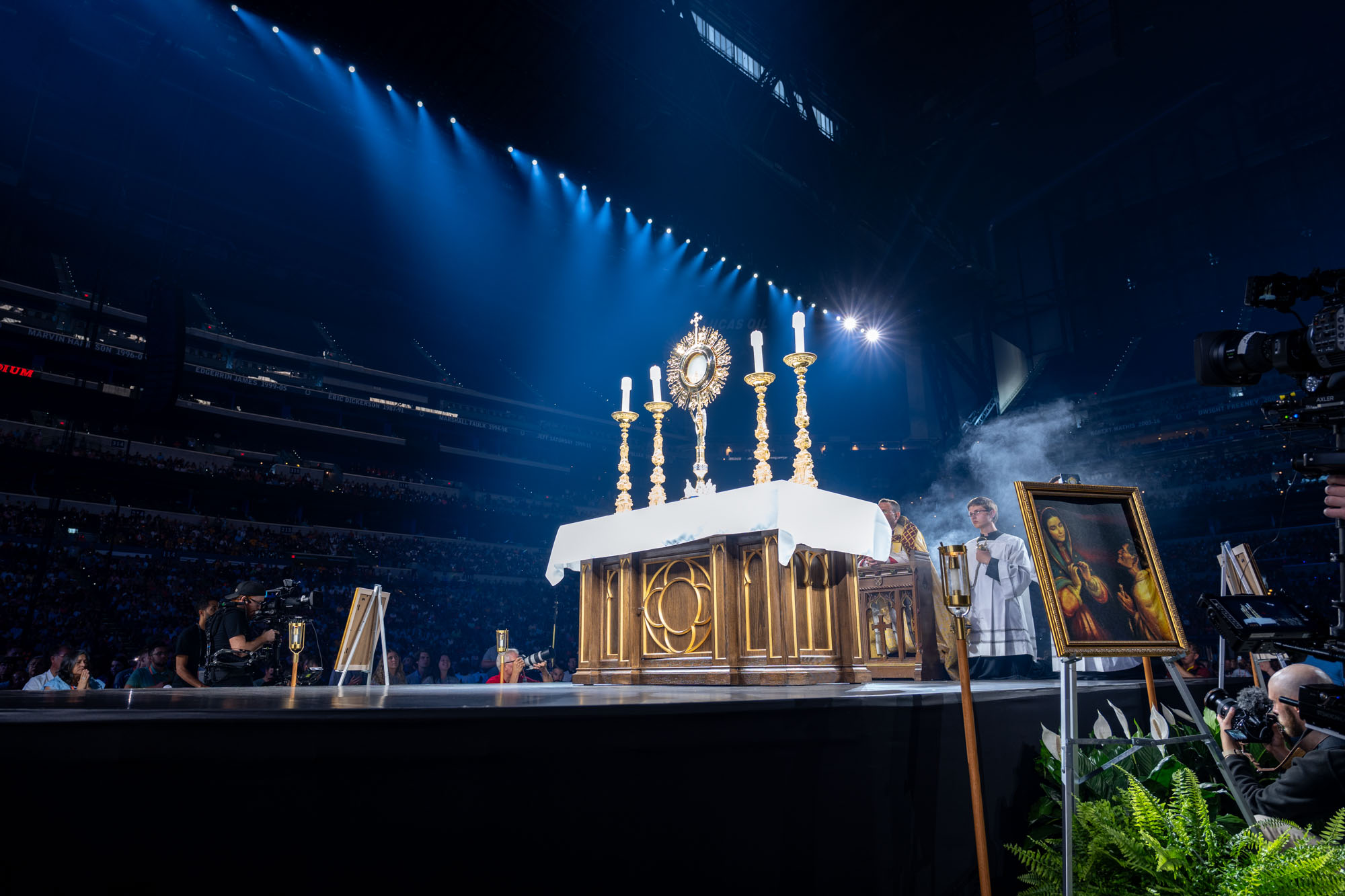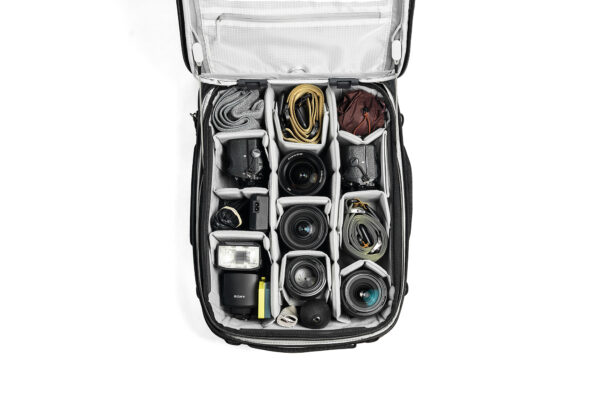Introduction
Quito, Ecuador! I still can’t believe I got a chance to visit this beautiful country!
I was invited by my friend Santiago, and I couldn’t miss such an opportunity, so this guide was made by me and my friend who was born here. You will find the best places to visit, secret places that are not well known to tourists, and also, where to try the best coffee and food. I hope this travel guide will help you prepare for your next trip to Quito!
What should you know about Quito?
Learn some works in the Quechua language, a big part of Ecuador’s heritage is there history and culture. Quechua was a language family of the Inca Empire, it is estimated that still a few million people in South America can speak this language. Make a good impression and learn some words!
wayna – boy
sipas – girl
tayta – father
mama – mama
chiri – cold
quñi – hot
Here is a translator you can use.
Another big part of the culture is music, you will definitely make a good impression if you know those artists:
- Julio Jaramillo
- Hermanos Mino
- Naranjo
- Paulina Tamayo
I felt safe visiting Quito, there are a lot of police in the downtown area, but I would definitely recommend not walking around solo after dusk, that would be advice for every big city in the world.
The best time to visit Quito
Quito is the second highest-located capital in the world, its average elevation is 2800 m (9186 feet), so make sure you always have some warm clothes, the best time to visit Quito is between June and September, weather is stable, around 20°C+ (68°F+) during the day and 7°C+ (45°F+) during the night. September may be rainy so try to check out the weather before. Also, winter will be colder and more rainy, but they never have snow!
Quito trip costs
The most expensive part of a trip to Quito will be a plane ticket, besides that the costs of living are cheap compared to the USA. You can have breakfast for $3-$4, lunch will be a little bit more expensive, and you can also get street food for as cheap as $1 – $1.50. Dinner at very good restaurant will cost you $20-$40.
Accommodation starts at $30 per night, so you can definitely travel on a budget, also Uber rides will be around $5 anywhere around Quito unless you travel out of the city I would not recommend renting a car, you need to be a skilled driver to move in uphills and downhills with manual gears!
You travel guide map to Quito!
Places to visit, things to do
Reserva Geobotánica Pululahua
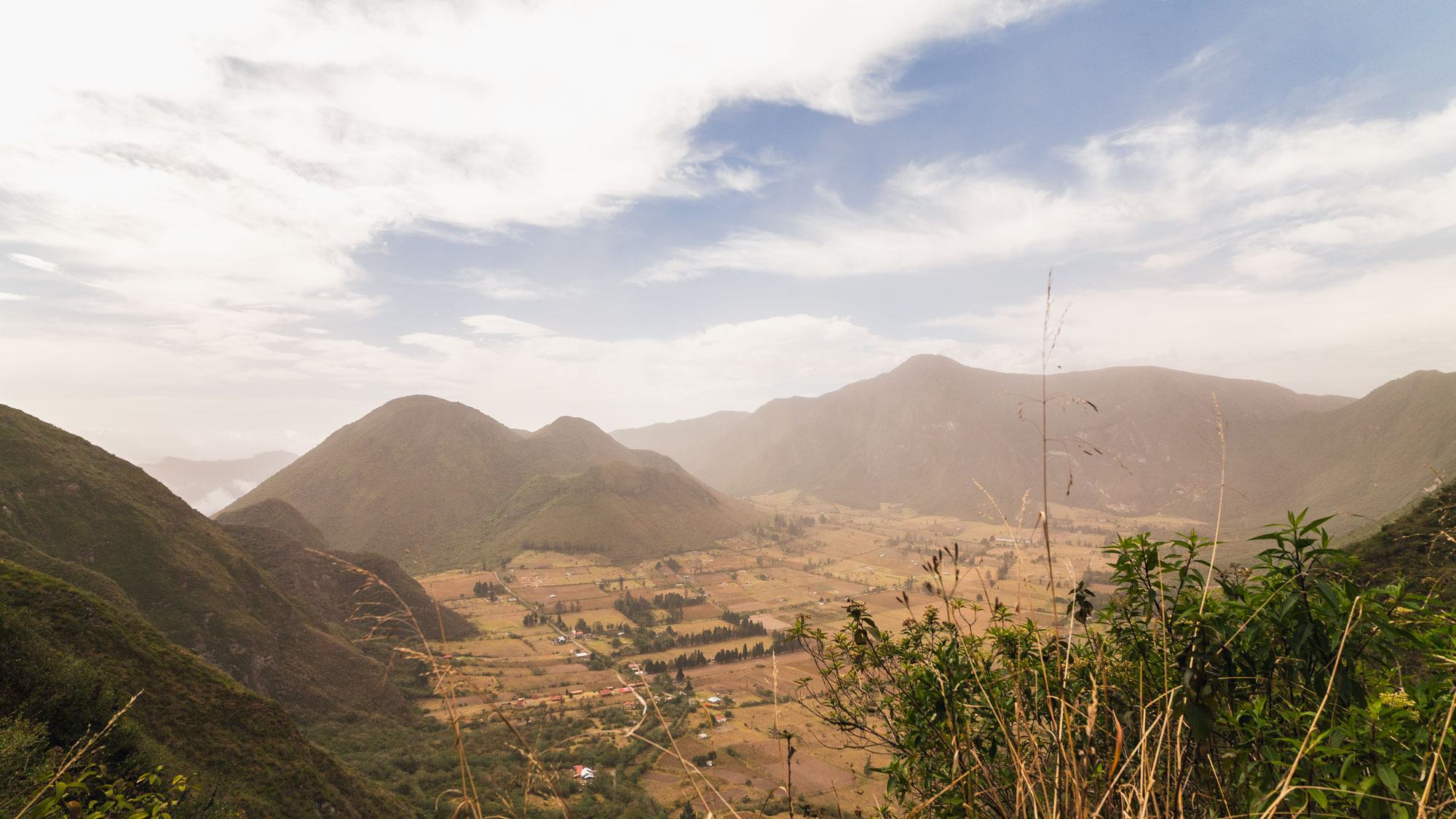
The Reserva Geobotánica Pululahua is a geobotanical reserve located in Ecuador. It is known for being one of the few inhabited volcanic calderas in the world, encompassing a stunning landscape of lush vegetation within the crater of an ancient volcano. This unique ecosystem is rich in biodiversity and showcases a variety of flora and fauna, offering visitors a glimpse into the natural beauty and ecological significance of the region. Additionally, Pululahua is recognized for its cultural and historical importance, providing a captivating blend of natural wonders and human heritage.
Google Maps
Drive from Quito: ~45 min
Museo de Sitio Intiñan
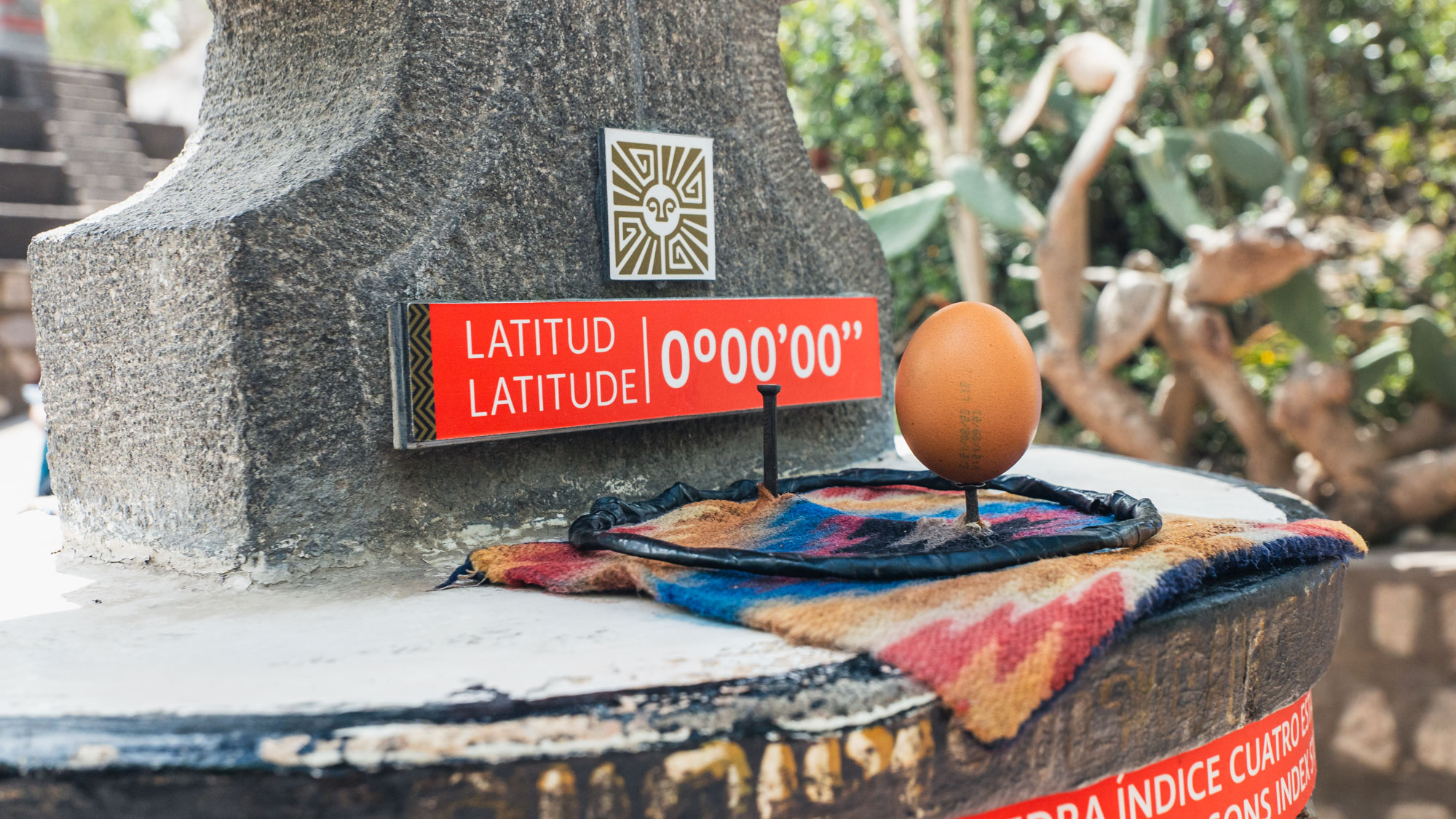 A tourist attraction that is very close to Reserva Geobotánica Pululahua. The museum is dedicated to the equator and and everything related to it, you will experience some exercises that will definitely surprise you!
A tourist attraction that is very close to Reserva Geobotánica Pululahua. The museum is dedicated to the equator and and everything related to it, you will experience some exercises that will definitely surprise you!
Google Maps
Drive from Quito: ~35 min
Middle of the World City (Mitad del Mundo)
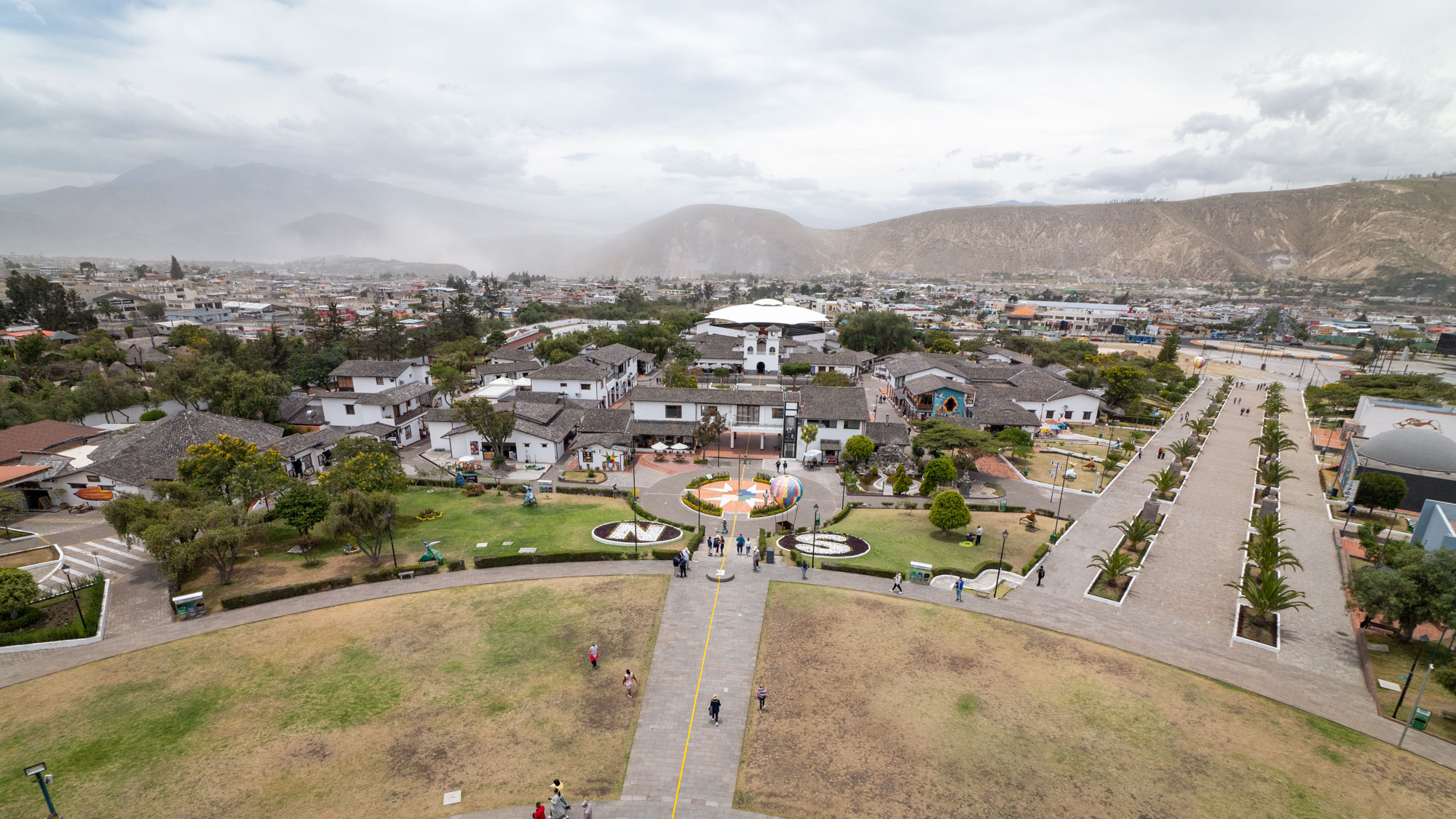
Very close to Museo de Sitio Intiñan, a small town where you can find the equator monument with a history museum inside. Town will have a lot of small shops where you can buy local products and also try local food.
Google Maps
Drive from Quito: ~35 min
Centro Histórico
The Centro Histórico, or historic center, of Quito, Ecuador, is a UNESCO World Heritage Site renowned for its exceptionally preserved colonial architecture, narrow cobbled streets, and rich cultural heritage. The heart of Quito’s historic district is characterized by well-preserved Spanish colonial buildings, churches, and plazas, showcasing a blend of Baroque, Moorish, and indigenous influences. You should see iconic landmarks such as the stunning Iglesia de la Compañía de Jesús, the grand Plaza de la Independencia, and the imposing Cathedral of Quito. The Centro Histórico offers a captivating glimpse into the city’s past and is a vibrant hub for art, culture, and traditional Ecuadorian cuisine.
Virgen de EL Panecillo
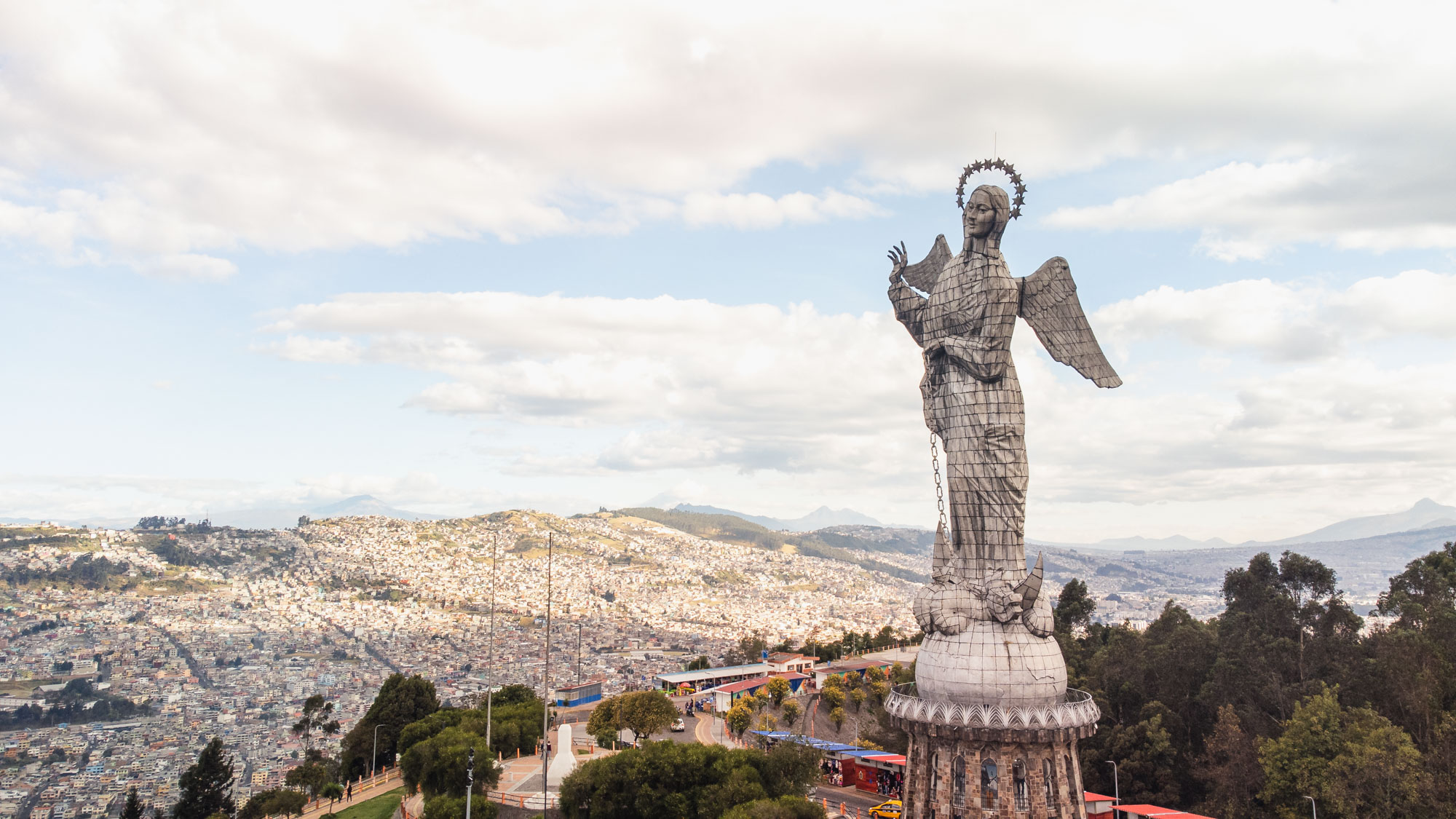
One of the highest statues in South America (even taller than Christ the Redeemer in Rio de Janeiro) 41 m, 135 feet. On the top of El Panecillo hill, you will find stunning views of the entire Quito, the surrounding mountains, and if the weather is really good even some of the local volcanos.
Church of the Society of Jesus (Iglesia de la Compañía de Jesús la caminatas)
commonly known as La Compañía, is an extraordinary example of Baroque architecture located in Quito, Ecuador. Renowned for its lavish and ornate design, this Jesuit church is a true masterpiece of art and faith. Its facade is a marvel of intricate stone carvings, and the interior is a breathtaking display of gilded altars, elaborate woodwork, and exquisitely adorned chapels. The church’s ceiling is a work of art, displaying a stunning depiction of heaven, complete with angels and celestial motifs. La Compañía stands as a testament to the grandeur of Baroque architecture and remains a significant spiritual and cultural landmark in Quito.
San Francisco Catholic Church (Iglesia Católica San Francisco)
is a historic and revered religious landmark, steeped in centuries of tradition and faith. This grand church, founded in the 16th century, is a prominent example of Spanish Baroque architecture. Its stunning facade is adorned with intricate stonework and intricate carvings, reflecting the architectural beauty of its time. The interior boasts impressive altars, ornate chapels, religious artifacts, and a sense of spiritual reverence. The church complex also includes a monastery and a peaceful courtyard, providing a serene retreat within the bustling heart of Quito. San Francisco Catholic Church stands as an emblem of Quito’s rich cultural and religious heritage, welcoming visitors to explore its historical significance and experience a glimpse into Ecuador’s past.
Basílica del Voto Nacional
is a monumental neo-Gothic basilica that stands as a symbol of national pride and faith. This magnificent cathedral is an architectural marvel, renowned for its intricate stonework and soaring spires that dominate the Quito skyline. The basilica is not only a place of worship but also a representation of Ecuadorian identity, incorporating indigenous elements into its design. Visitors can climb to the top of the towers for panoramic views of Quito, making it a popular tourist destination. The interior is equally impressive, adorned with beautiful stained glass windows and impressive altars, adding to the spiritual and aesthetic allure of this iconic landmark.
Catedral Metropolitana de Quito
also known as the Metropolitan Cathedral of Quito, is a prominent and stunning religious edifice located in the heart of Quito, Ecuador’s capital. This awe-inspiring cathedral stands as a prime example of Ecuadorian colonial architecture, with its distinct Baroque style and pronounced Moorish influence. The cathedral’s intricate façade, intricate ornamentation, and towering twin towers are iconic features, showcasing the rich cultural and religious heritage of the city. It stands as a revered place of worship and a significant cultural landmark, attracting visitors from around the world to marvel at its historical and architectural splendor.
Mindo Valley
located in the Pichincha province of Ecuador, is a stunning and biodiverse cloud forest region nestled in the Andes Mountains. It’s renowned for its lush greenery, misty ambiance, and abundant wildlife. The valley is a haven for nature enthusiasts, offering a rich variety of flora and fauna, including diverse bird species, butterflies, orchids, and unique plants.
Visitors flock to Mindo Valley to explore its pristine forests through hiking, birdwatching, zip-lining, and nature walks. The region is also known for its adventurous outdoor activities, such as tubing along the rivers and cascading down waterfalls. Additionally, the valley is a hub for ecotourism and is committed to sustainable practices, making it an excellent destination for those seeking an eco-friendly travel experience.
Google Maps
Drive from Quito: ~2 h
Where and what to eat?
La Capilla
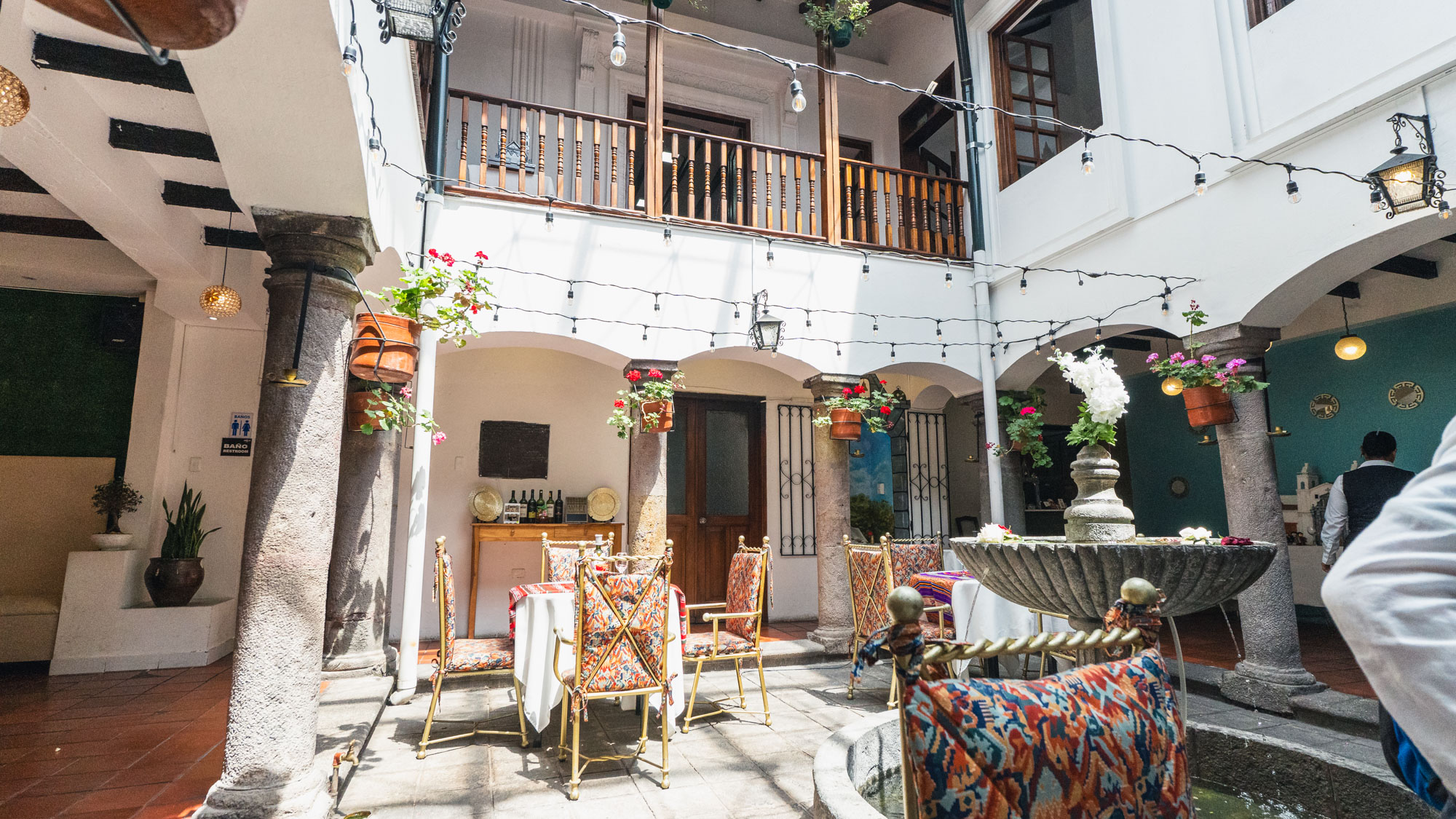 Address: Benalcazar N2-76, Quito 170401
Address: Benalcazar N2-76, Quito 170401
Pim’s
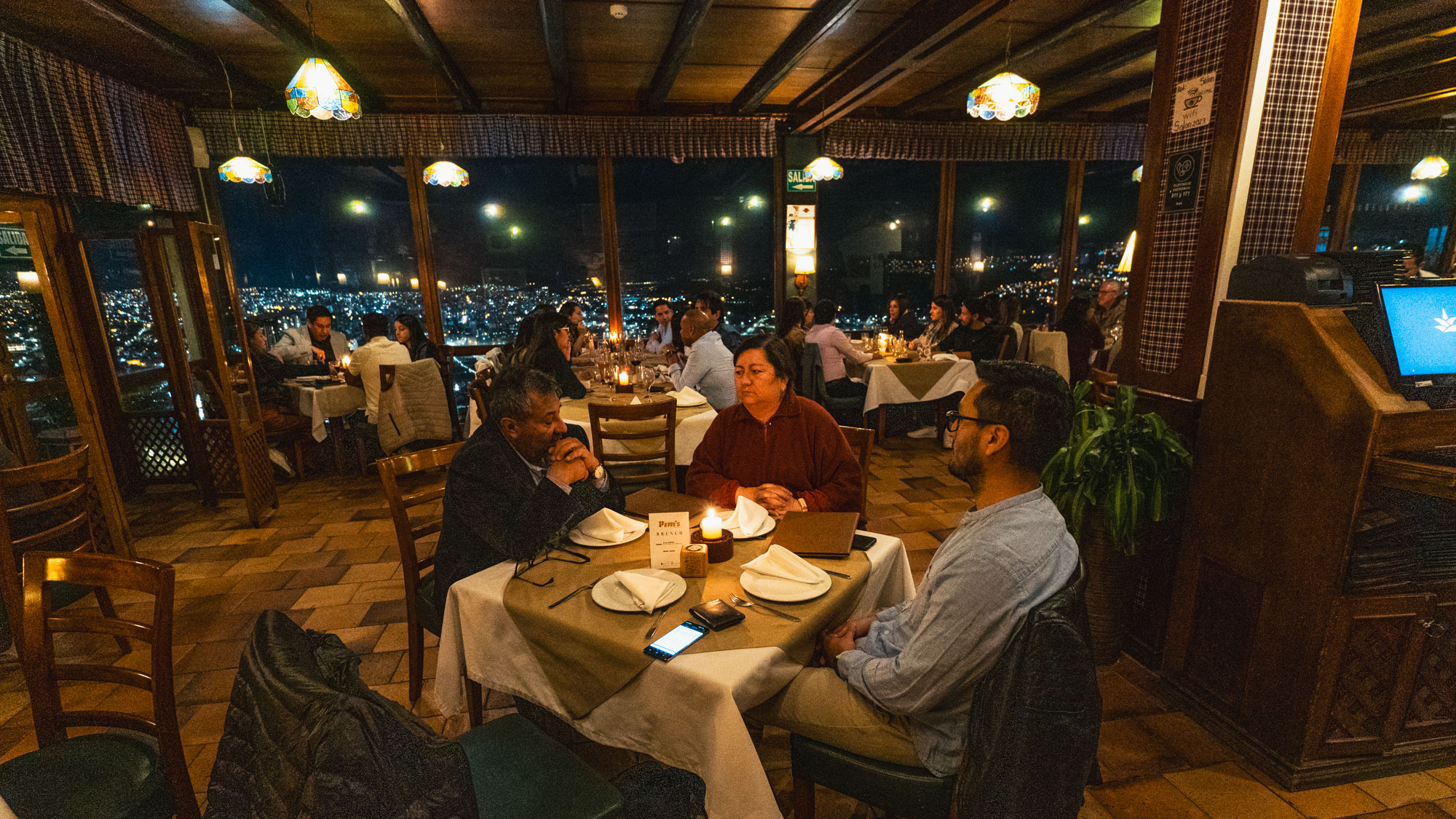 Address: Gral. Melchor Aymerich, Quito 170111
Address: Gral. Melchor Aymerich, Quito 170111
Mote Colonial
Address: Cuenca N8-10, Quito 170401
Modelo
Address: C. Sucre Oe4-85, Quito 170401
What to eat?
Sanduche de Pernil
often referred to as “pork sandwich” in English, is a popular and delicious traditional Ecuadorian street food. It typically consists of slow-roasted, marinated pork (pernil) that is tender and flavorful. The pork is thinly sliced and served in a bun, accompanied by various toppings and condiments such as lettuce, tomatoes, pickles, mayonnaise, ketchup, and mustard.
The pork is often marinated with a mixture of spices, herbs, and sometimes citrus juices, enhancing its taste and tenderness. Sanduche de Pernil is loved for its savory and succulent flavors, making it a go-to choice for locals and visitors alike seeking a satisfying and hearty sandwich option in Ecuador.
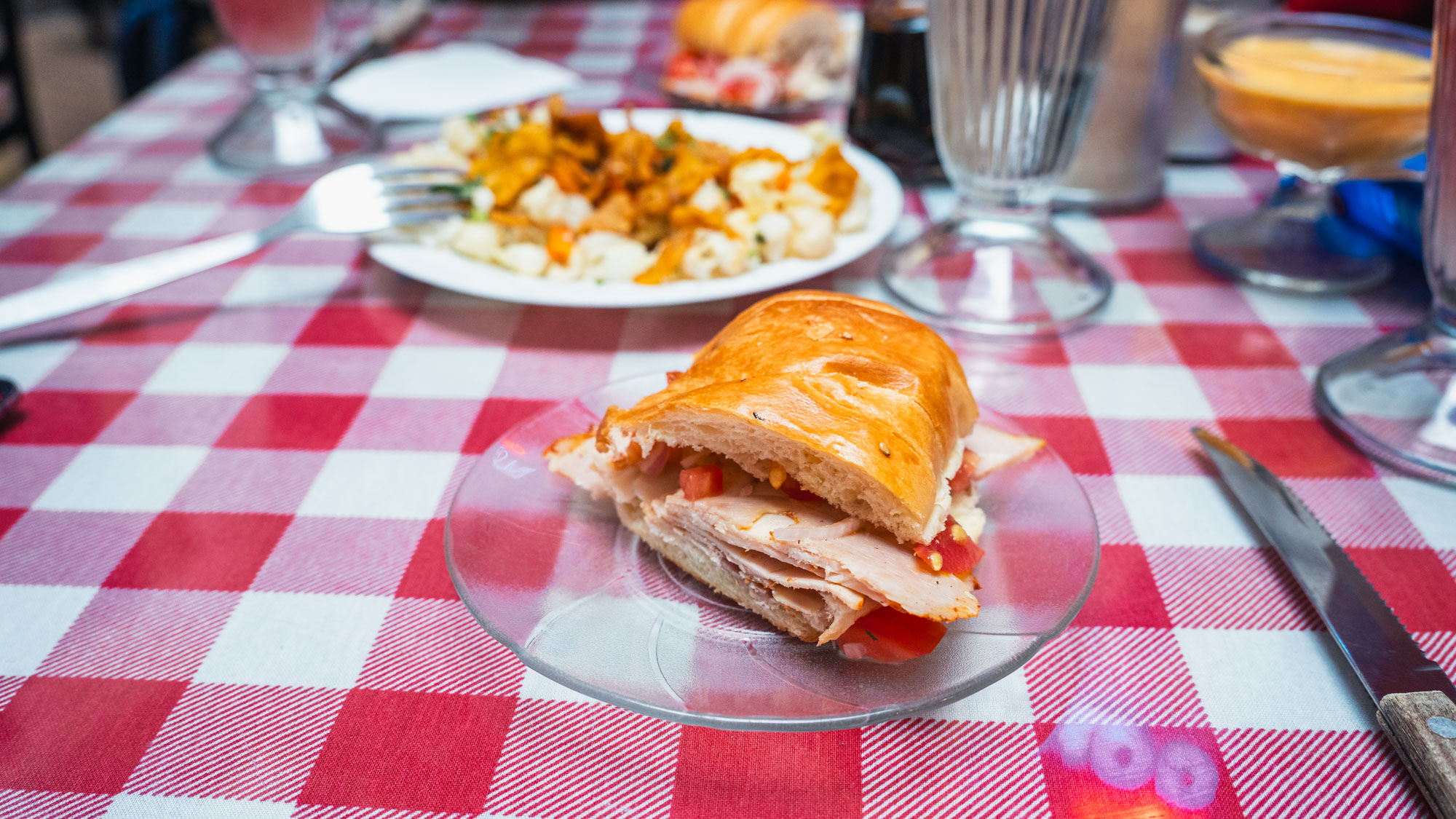 Bolon de Verde
Bolon de Verde
is a traditional Ecuadorian dish made from green plantains. The name “Bolon” comes from the Spanish word for “ball,” and “Verde” refers to the green color of the plantains used in the preparation. To make Bolon de Verde, ripe green plantains are peeled, boiled, mashed, and mixed with ingredients like cheese, chicharrón (fried pork belly or pork cracklings), or achiote for added flavor and color.
The mixture is then shaped into large round or oval balls and deep-fried until they achieve a crispy exterior while maintaining a soft, flavorful inside. Bolon de Verde is a popular snack or side dish in Ecuador and is often served with avocado slices, fried eggs, sausage, or aji (a spicy condiment made from hot peppers) for a tasty and satisfying meal.
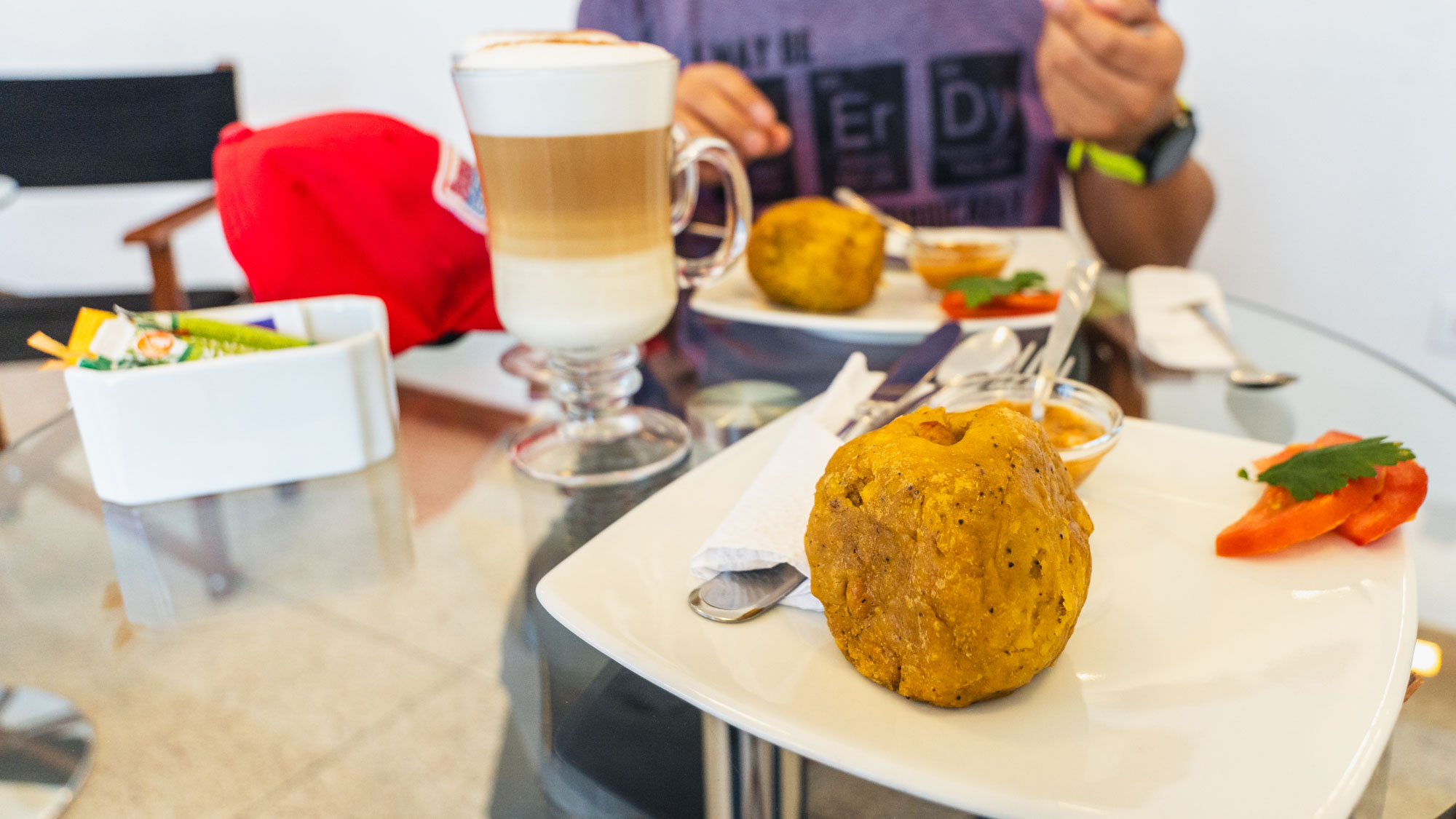 Encebollado
Encebollado
is a beloved traditional Ecuadorian fish soup that holds a special place in the country’s cuisine. It’s a hearty dish primarily composed of fresh tuna, although sometimes other seafood like albacore or mackerel may be used. The name “encebollado” comes from “cebolla,” which means onions in Spanish, a key ingredient in the dish.
The soup is made by simmering chunks of tuna in a flavorful broth infused with a mixture of onions, tomatoes, cilantro, and spices. Yucca (cassava) is often added to provide thickness and substance to the soup. Encebollado is commonly garnished with additional raw onions, lime juice, and sometimes a sprinkle of fresh cilantro.
This dish is not only cherished for its delicious and robust flavors but is also known to be a revitalizing and popular cure for a hangover in Ecuador, earning it the nickname “levanta muertos,” which translates to “raise the dead.” It’s a staple in Ecuadorian coastal cuisine and is enjoyed by locals and visitors alike.
Ceviche de camaron
is a popular and delightful Ecuadorian dish that features shrimp as the main ingredient. It is a type of ceviche, a traditional Latin American dish where raw seafood is cured or marinated in citrus juices, typically lime or lemon, which “cooks” the seafood through a chemical process known as denaturation.
In the case of ceviche de camarón, raw shrimp is marinated in lime or lemon juice along with various other ingredients such as onions, tomatoes, cilantro, and sometimes avocado. The acidity from the citrus juice effectively “cooks” the shrimp, turning it opaque and giving it a firm texture.
The ceviche is typically seasoned with salt, pepper, and sometimes a bit of spicy chili for an extra kick. It’s commonly served chilled and garnished with additional cilantro or parsley, making it a refreshing and flavorful appetizer or main dish, particularly popular in coastal regions of Ecuador.
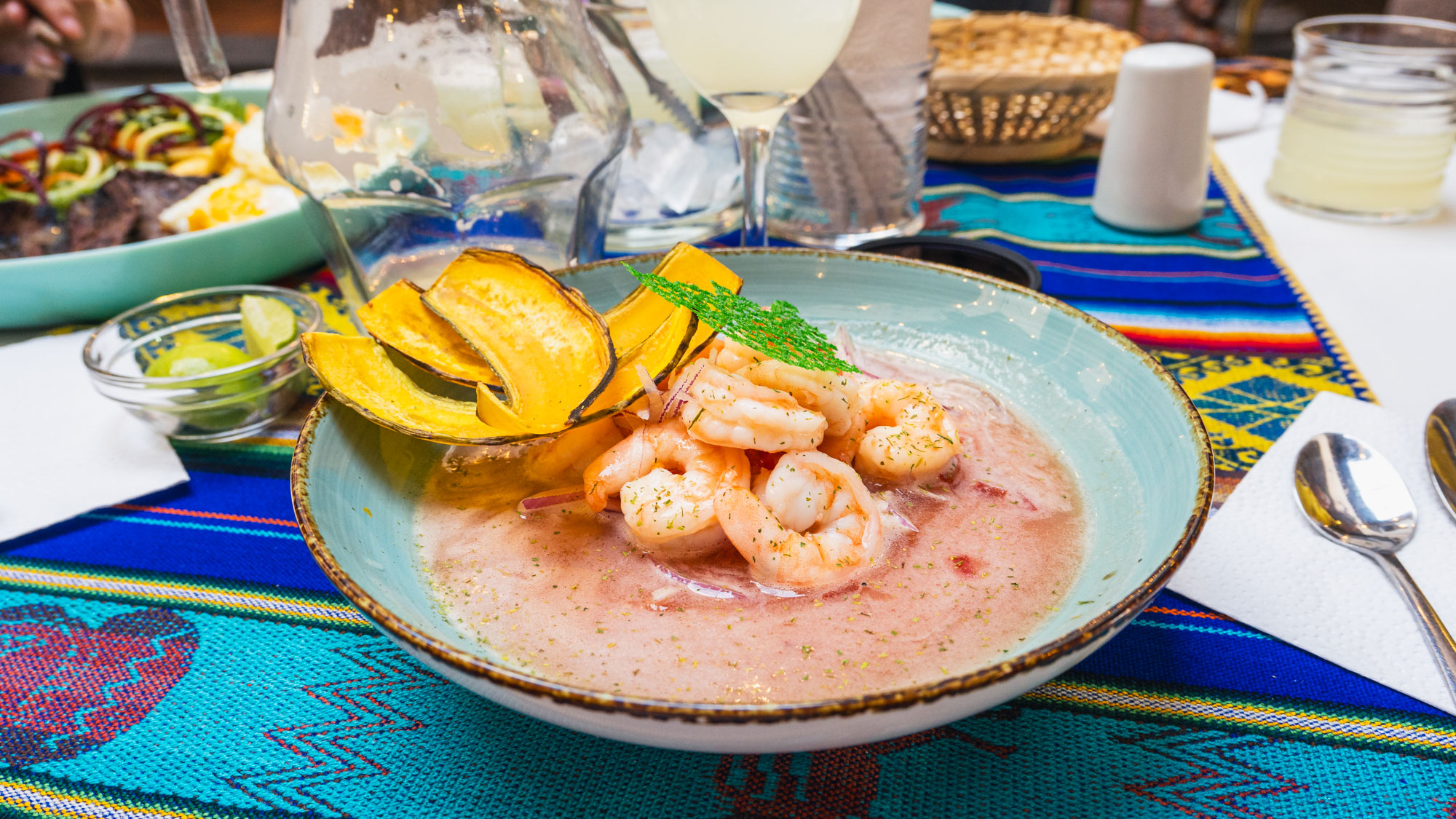 Hornado
Hornado
is a traditional Ecuadorian dish that showcases roasted pork as its centerpiece. The name “hornado” is derived from the Spanish word “hornear,” which means “to bake” or “to roast.” The dish involves marinating a whole pig with a blend of spices, herbs, and achiote (a natural red coloring and flavoring made from annatto seeds) to enhance its taste and achieve a distinctive reddish hue.
The marinated pig is then slow-roasted in a wood-fired oven or over an open flame until the skin becomes crispy and the meat tender and flavorful. The result is succulent, juicy pork with a crispy exterior, often served with traditional accompaniments like llapingacho (potato patties), mote (hominy corn), fried plantains, avocado, and a spicy chili sauce.
Hornado is a beloved dish in Ecuador, particularly during special occasions, festivals, and family gatherings, showcasing the rich culinary heritage of the country.
Fritada
is a popular Ecuadorian dish made from succulent, marinated, and fried pieces of pork. The name “fritada” comes from the Spanish word “frito,” which means “fried.” The pork used in fritada is typically cut into chunks and slow-cooked in a flavorful mixture of spices, citrus juices, and achiote (annatto) to achieve a vibrant color and robust taste.
Once marinated, the pork is deep-fried until the exterior becomes crispy while the inside remains tender and juicy. Fritada is often served with traditional sides such as mote (hominy corn), llapingacho (potato patties), fried plantains, avocado slices, and curtido (a pickled cabbage salad). It’s a beloved and hearty dish enjoyed across Ecuador, particularly during festivities and gatherings.
Mote con chicharron
is a popular and delicious Ecuadorian dish that combines mote (hominy corn) with chicharrón, which refers to fried pork belly or pork cracklings. Mote, a type of cooked and soaked hominy corn, provides a hearty and starchy base for the dish.
The chicharrón, often prepared by frying pork belly until it’s crispy and golden brown, adds a flavorful and crunchy element. The dish is typically accompanied by pickled vegetables, avocado slices, and sometimes aji (spicy sauce) for extra flavor and zest.
Mote con chicharrón is a beloved traditional meal in Ecuador, celebrated for its satisfying textures and flavors, making it a popular choice for locals and visitors alike. It’s frequently enjoyed during special occasions, gatherings, or simply as a delicious and filling comfort food.
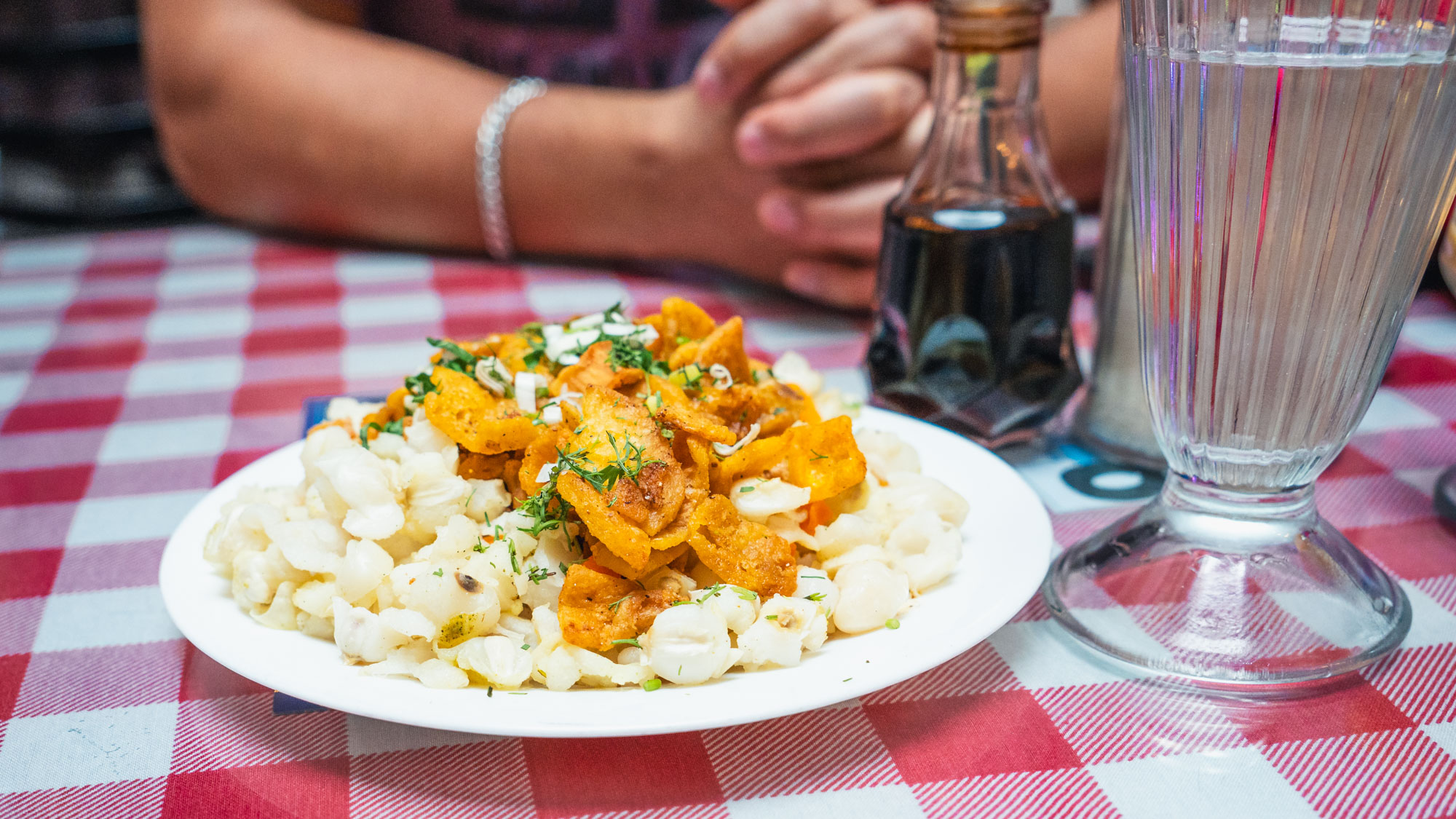
Conclusion
I love this place! You can easily spend a week in Quito, visiting different sites, learning about the history and culture of Ecuador, and doing some unbelievable hikes up to almost 6000 m, on an active volcano. You could spend another week in the Galapagos, enjoy outdoor activities in Could Forest, and try that amazing food. The cost of living will make you also happy! I hope you will have a chance to visit, let me know if you have any questions or concerns in the comments.



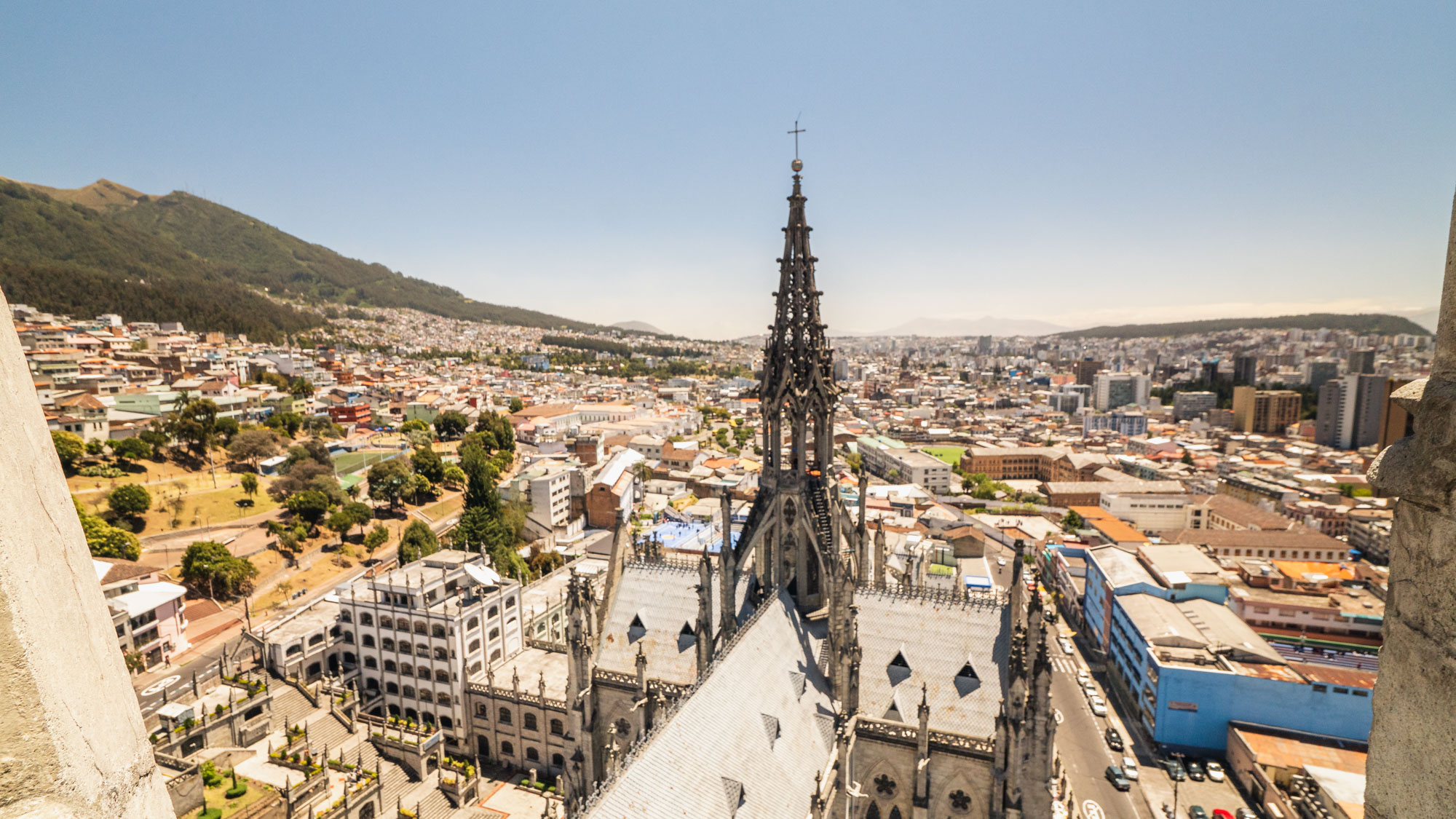
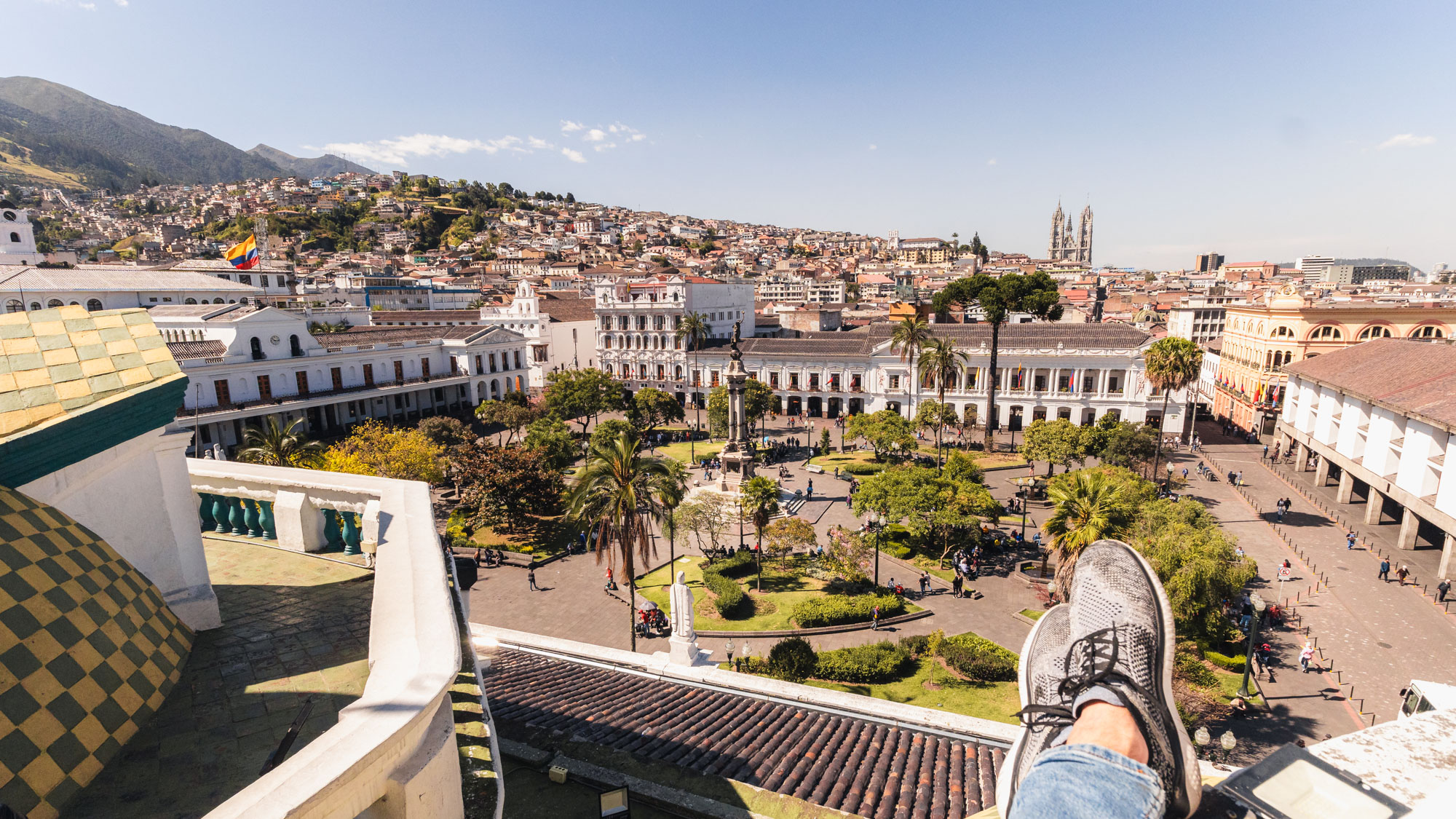
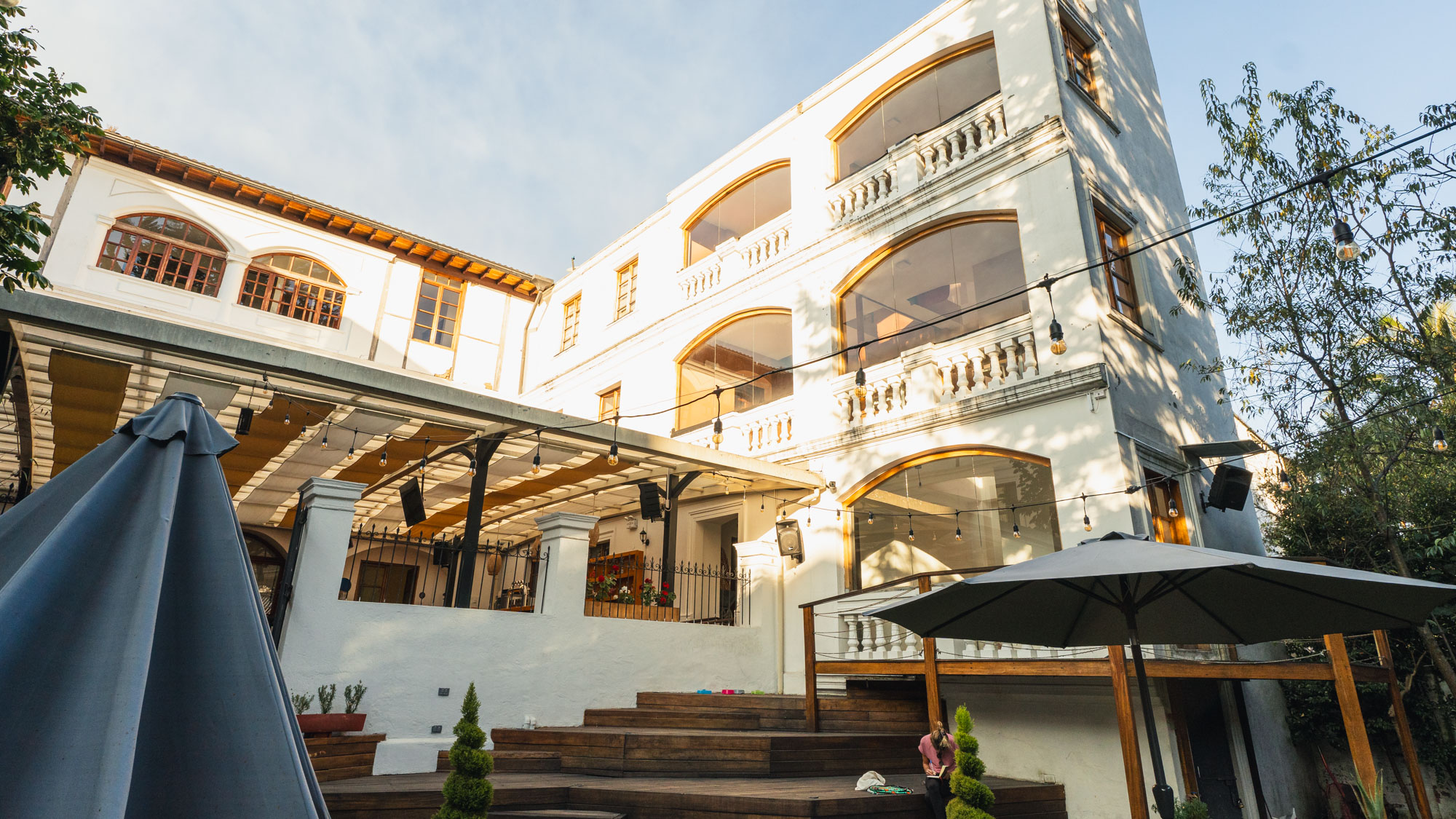 Price:
Price: 

